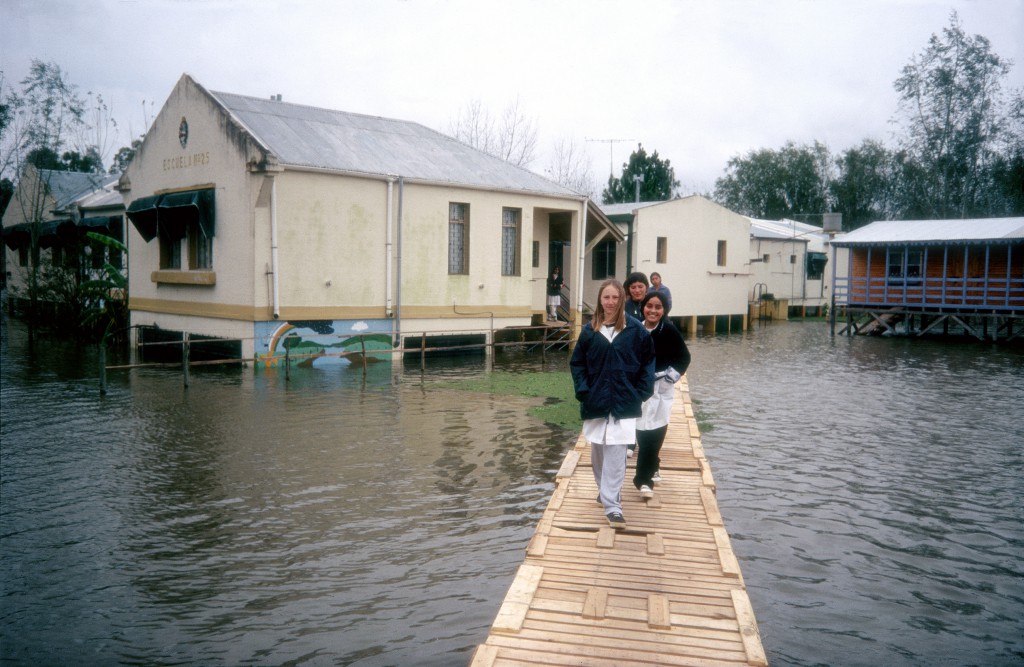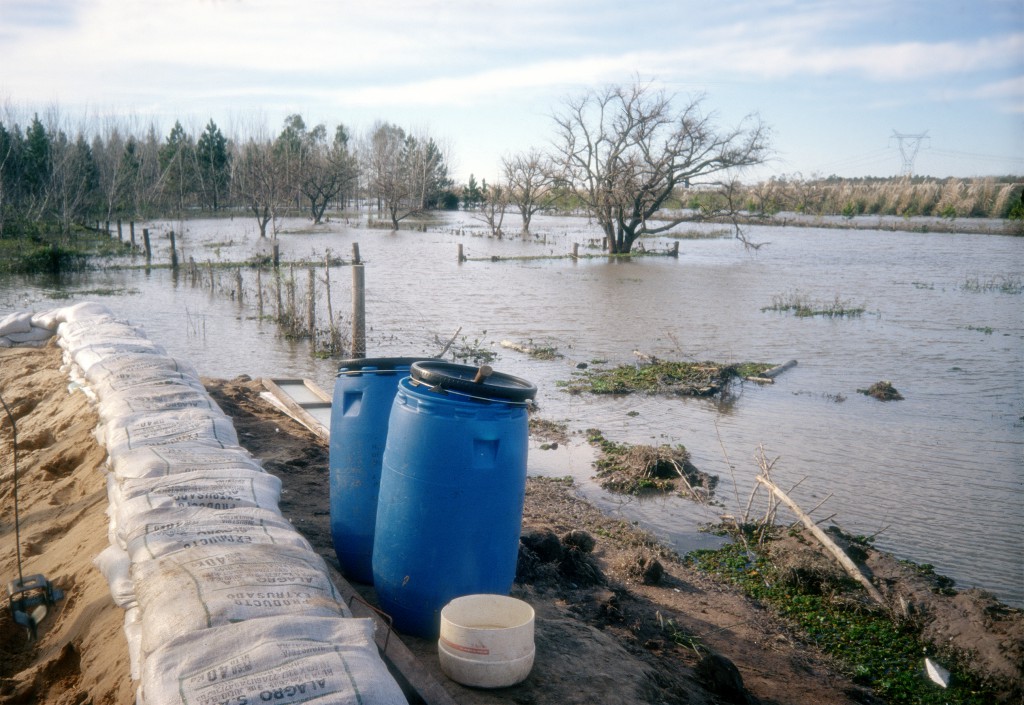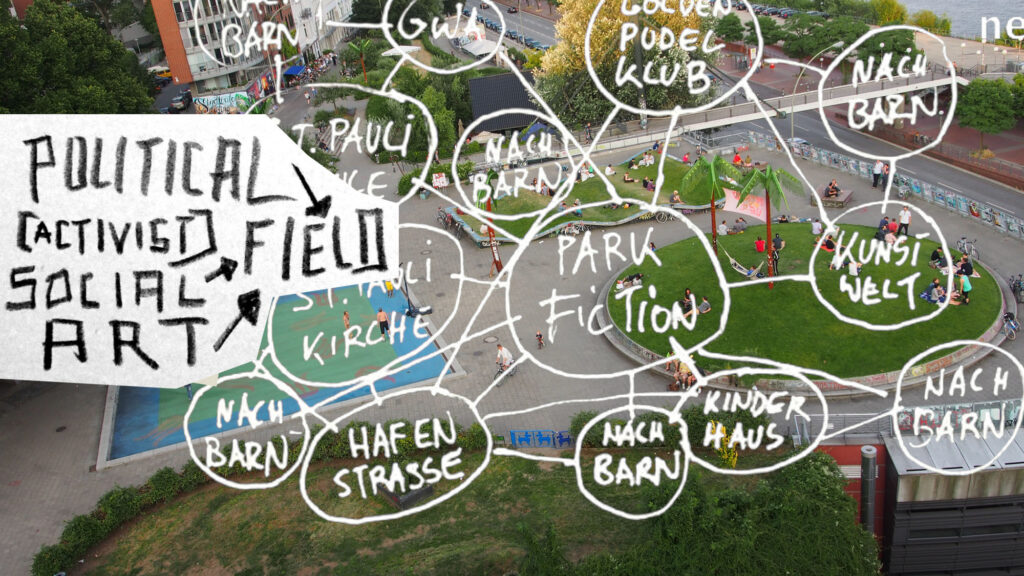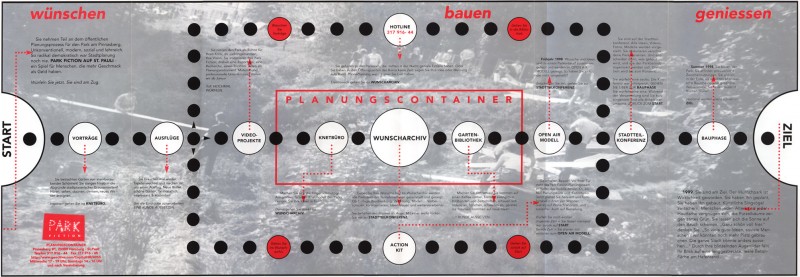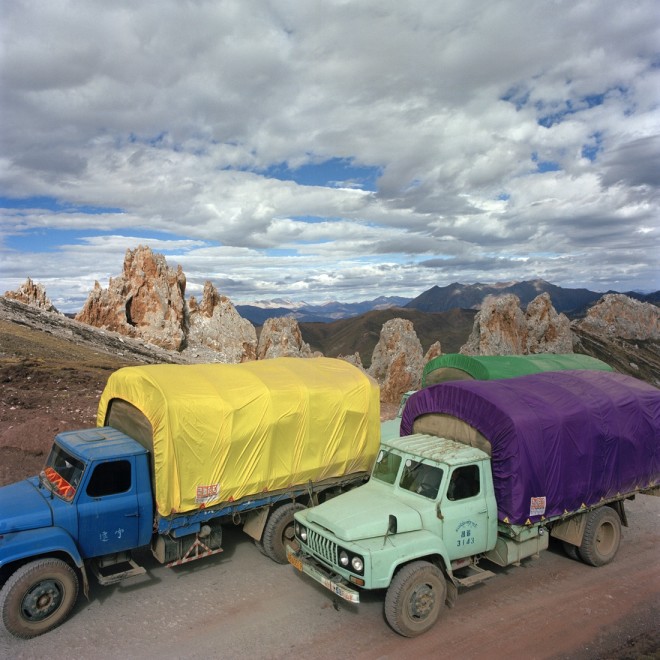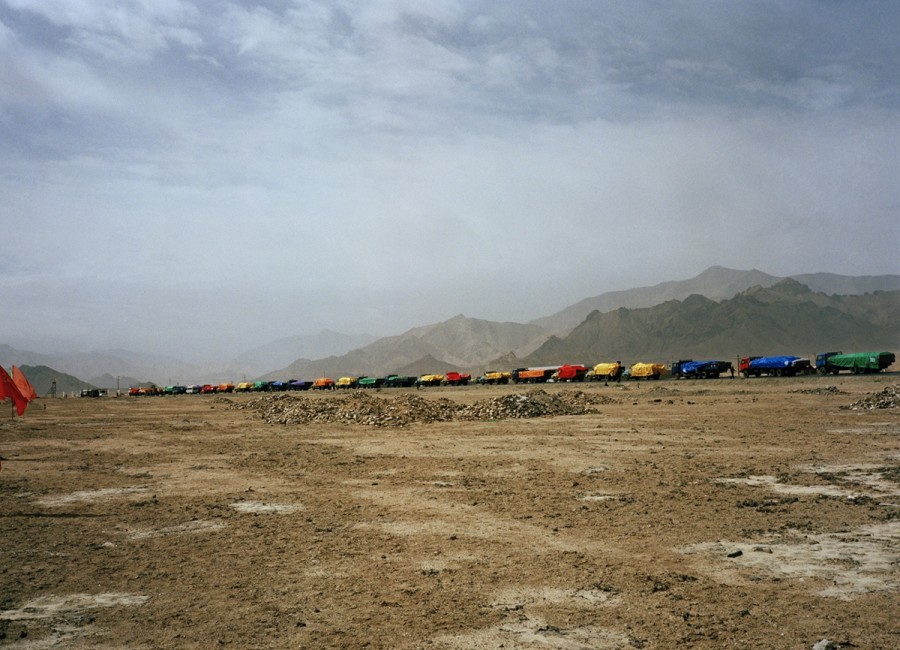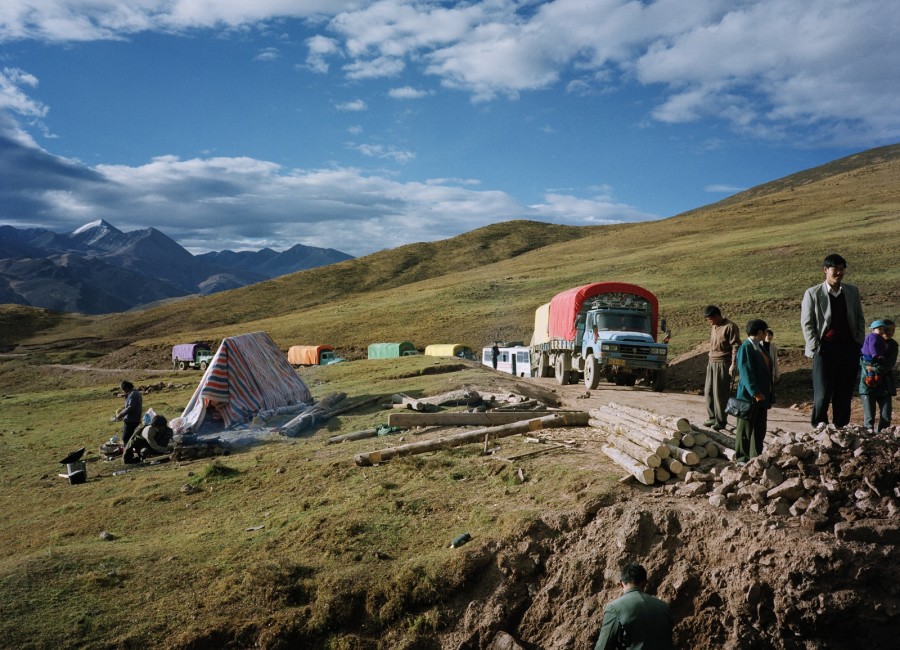Allgemein
Olafur Eliasson’s ‘Ice Watch’ in London, 2018. The Dialectic between Climate Change and the Embodied Anthropos, an “Emotional Affair”
Thursday, October 8th, 2020 | Allgemein | No Comments
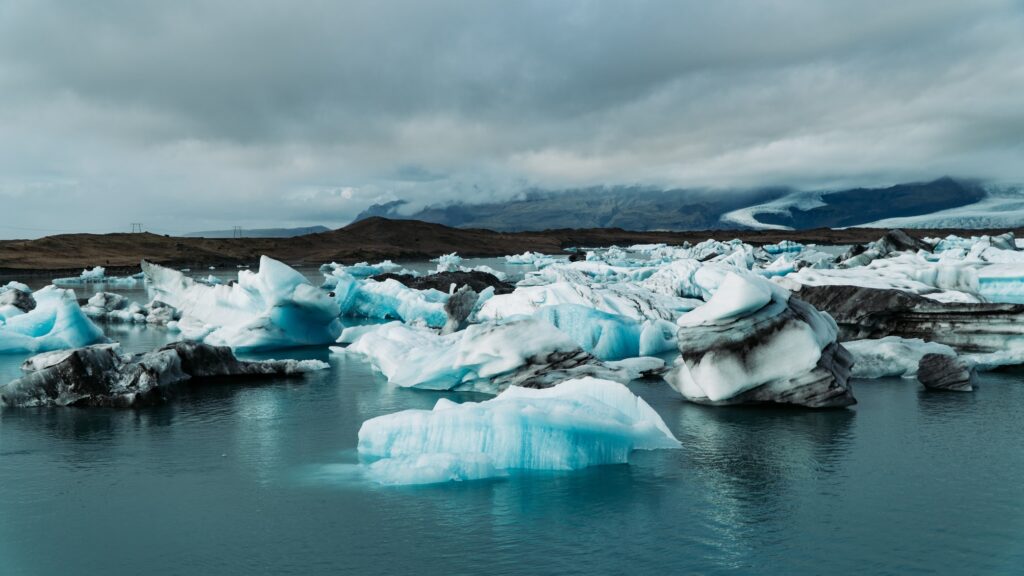
by Costina Mocanu
1. “What happens in the Arctic doesn’t stay in the Arctic” [1]
On December 11, 2018, the Icelandic-Danish and environmentally-conscious artist Olafur Eliasson (b. 1967) exhibited his ‘Ice Watch’, an installation of melting glacier ice, for the third time, thus illustrating the effects of human activity on Earth in the current geological epoch known as the Anthropocene. Intertwining appealing aesthetics with a message of climate change awareness and by challenging the (educated) viewer-cum- participant to actively engage both on the visual and intellectual level, Eliasson intends to reaffirm the well-known relentless impact of Anthropos on the planet. However, despite the ecological issue which is reinforced by explanatory panels, the installation appeared as a taciturn, yet spectacular image that attracted a diverse spectrum of viewers, rather than visualizing a complex discourse on eco-friendly alternatives stemming from the physical encounter with the millennial displaced chunks of ice. Thus, from a theoretical point of view and in line with Guy Debord’s “The Society of the Spectacle” (1967), one can easily state that ‘Ice Watch’ appears as a spectacle consumed by the viewers crossing the public spaces of the Tate London Museum and Bloomberg headquarters. Furthermore, while being made from ephemeral material, ‘Ice Watch’ is further perpetuated through images of it circulating on social media such as Twitter and Instagram under the hashtag #IceWatchLondon.
After choosing two wealthy European capitals, Copenhagen and Paris, for his installation, this time Eliasson opted for the most cosmopolitan and urban Western centre of global financial and commercial activities, London. There the work was on display until December 21, 2018, before the eventually remaining chunks of ice were touring in schools and cultural centres. The installation offered a visual as well as haptic response to the 24th United Nations Climate Change Conference held in Poland between December 2 and 15, 2018, which concerned the progress of the Paris Agreement 2016 as well as the results obtained by the World Meteorological Organization on the atmospheric carbon dioxide level equivalent to the 405 parts per million. The outcome of the conference highlighted the importance of targeting a limit of temperature increase of 1.5 °C rather than 2 °C through a strict emission reduction. [2] As an artist, Eliasson made the well-known scientific numbers, facts, and calls to action tangible in a spectacular Weltanschauung, while at the same time presenting a fragile installation which openly called for actively engaged spectators/ participants. He installed blocks of floating ice that broke off from the glacier due to the increase of global temperatures in front of the industrial architecture of the Tate Modern Museum and the Bloomberg headquarters’ futuristic design, inviting the viewers to literally interact with ‘Ice Watch.’
At first glance, he realised a critical artwork which urges the viewer, as part of a collective, to act more sustainably and to adopt an environmentally-conscious behaviour in the future. However, upon examining the installation further, one realises the reduced aesthetic potential of a memorable, yet ephemeral experience of seeing and touching millennia-old chunks of ice melting in an urban setting. Conceived with the Greenland geologist Minik Rosing (b. 1957), Eliasson debuted this installation art [3] already in 2014 at the City Hall Square in Copenhagen, Denmark, during the 5th Assessment Report by the United Nations Intergovernmental Panel on Climate Change (IPCC) and re-staged it the following year at the Parisian Place du Panthéon, France, during the COP21 international agreement. [4] Hence, a total amount of thirty endangered gargantuan icebergs weighing between 1,5 tons and 6 tons were taken out of the Nuup Kangerlua fjord of Southwest Greenland, drawing attention to one of the most drastic consequences of global warming in the 21st century: the melting of millennia-old chunks of snow frozen before the Earth’s atmosphere was polluted by humanity. To assert that ongoing actions are urgently needed, Eliasson implemented this visual metaphor in public space by arranging blocks of ice, which he gathered from the Greenlandic fjords, into a circular formation reminiscent of the dial of a clock. In this way, the artist chronicled non-human suffering (ice) because of humankind’s (Anthropos) irresponsible actions through a tangible installation of (natural) ice. His aim was to present the melting resources as a global and collective matter, or more precisely, to represent a multiple imprint of the known through a spectacular installation that would attract the attention of the masses through a call for collective sensory perception.
For this reason, the artist took the ephemerality of millennia-old, pure ice not only as an occasion to sharpen awareness of the imminent danger of its melting, but also to point out the intersection between man and history, thus promoting care through artistic endeavour. Besides the mere visual contemplation, the large ‘Ice Watch’ installation enables the viewer/ citizen to actively participate in it, thus allowing for a direct experience of the ice melting (see Chapter 2). These thousands of years old, free-floating glacial icebergs were conceived as messengers of political significance and extraordinary, ancient beauty, offering the public the possibility of a tangible encounter with the consequences of their anthropocentric actions: When they touched the ice, it began to melt due to their body temperature, thus ultimately contributing to what the rising temperature of the climate has already caused. Since 2015, the melting ice of Greenland has raised the sea-level by 2.5 millimetres, [5] a number which might seem insignificant, but has the great potential of reaching the same. Just as the Norwegian Minister of Climate and Environment said, “What happens in the Arctic, does not stay in the Arctic,” when warning that by the late 2030s ice will not exist anymore as an integral part of the polar ice caps. Rather than recounting the repetitive vague statistics disseminated by the mass media, Eliasson acted as a mediator between the inaccessible melting Arctic, which remains out of reach even for wealthy people in Europe, and the realm of everyday life in hectic urban environments, which – in the case of London – count a large number of travellers, including tourists, commuters or business people.
The blocks of ice have been shipped from Greenland to the British Immingham port via Denmark in nine refrigerator trucks [6] and were subsequently transported to London. The carbon footprint caused by this transportation over a distance of 3.300 kilometres was calculated by Julie’s Bicycle non-profit organization to find more sustainable solutions of transportation and action. When answering the question why such a costly endeavour was realised despite the ice was already melting, Eliasson and Rosing argued that they calculated the energy invested in bringing each of the blocks to London as corresponding to the airline emission of carbon dioxide (CO2) a flight of only one person flying to the Arctic and back to witness the ice melting. [7] In other words, Eliasson stressed the influence that each person has when travelling from one side of the world to the other, including a direct link to mass tourism. A remarkable aspect of this easily accessible installation is its emancipating function as a tool for negotiating and re-evaluating the environment, whether it be natural or artificial. The moment when the Anthropos enters the installation and connects to the natural ice chunks, he/ she becomes himself/ herself the source of the artwork [8] and, thanks to the corporal experience, has the chance to reflect on society’s consumption. Eliasson’s ‘Ice Watch’ bridges both worlds by inviting the viewer-cum-participant to visually and intellectually engage with the environmental installation in an earth-shattering encounter and experimental setting.
2. ‘Ice Watch’ as an “Emotional Affair” [9]
Eliasson’s 2018 version of the ‘Ice Watch’ is larger than the previous versions in terms of the scale of the glacial chunks displayed on public view; while he kept the concept of displaying the ice in central and densely populated Western urban settings, here, in the proximity of the industrial companies and commercially used skyscrapers on the shores of the Thames, he chose more than the double amount of ice blocks in comparison with the previous versions of Copenhagen and Paris (twelve chucks each). Starting precisely with its location, the work is twofold: it firstly mirrors the contrast between the urban setting of human beings and the purity of natural elements, thus addressing the issues of anthropocentric activity; secondly, it creates a tangible metaphor between two different components of nature: the ice suffering because of the Anthropos. Intriguingly, the installation focuses on the polysemic term ‘watch.’ On the one side, to ‘watch out’ is about timing and acting in time in more sustainable and ethical ways, paying attention to the ecological aspects of alimentation, transportation, and consumption. On the other side, the verb invites the viewers to observe the installation by requesting them to take time to explore it, enter its space, move through it, becoming themselves part of the exhibition’s rhetoric, and, above all, to focus on watching its ephemerality.
‘Ice Watch’ can be defined as a work of installation art, [10] a genre including processual aspects and an object-spectator-relationship that goes beyond the conventional role of the spectator as a mere onlooker. The crucial difference and characteristics of installation lie in the way in which the viewers can either limit themselves to the static act of observing the work from a specific distance, enhancing an intellectual engagement [11] or to become central and active participants of the installation itself. In the latter case, the viewer-cum-participant experiences not only the fragility of the ice blocks through the five senses, but also the interdependencies between humans and non-human elements as being as both parts of nature, as well as envisioning modalities of (personal) action on a social scale, thus challenging the limits of different agencies. Hence, Eliasson breaks with the traditional triangular relation of “artist-work-of-art-viewer,” [12] in favour of sensory propinquity, physical emancipating participation, as well as an increase of awareness. The viewer-cum-participant becomes an embodied viewer [13] of the installation and can freely encircle the ice, embrace it, lick it, hear the fizzing bubbles of air, smell it. The primacy of the viewers’ bodies and their experience designate Eliasson’s working at the interstices between the tangible action and the logic of understanding and knowledge-creation concerning anthropocentric action. Thus, the experience of reality yields both physical and psychological levels in a dynamic relation between the perceived and the perceiving. As previously mentioned, Eliasson encourages the viewers to engage with corporeality:
“Put your hand on the ice, listen to it, smell it, look at it – and witness the ecological changes our world is undergoing” [14]
“The blocks of ice await your arrival. Put your hand on the ice, listen to it, smell it, look at it – and witness the ecological changes our world is undergoing. Feelings of distance and disconnect hold us back, makes us grow numb and passive. I hope that Ice-Watch arouses feelings of proximity, presence, and relevance, of narratives that you can identify with and that make us all engage. We must recognize that together we have the power to take individual actions and to push for systematic change. Come touch the Greenland ice sheet and be touched by it. Let’s transform climate knowledge into climate action.” [15]
Yet, although the ideal viewer is triggered by the lasting affective and intellectual engagement, the embodied viewer’s contact with the ice can lead to an instinctive (re)action that bears the risk of experiencing the installation merely as an attractive form of entertainment. Even though the informative panels displayed around the installation report data and facts, it should be recognized that the tangible encounter with ‘Ice Watch’ neither offers (political) solutions for climate change, nor urges the responsible to establish green capitalism and to actively contribute to an ecological discourse. Even when one considers both, the fact that the installation is accessible to everybody and the heterogeneous and international audience participating and embracing the ice chunks – the viewers as also the users of the installation [16] -, ‘Ice Watch’ is not to be confused with a democratic process. In relation to the artist, the embodied viewer does not have a voice in conceptually shaping the project when compared with the authorial power of Eliasson. What is evident though, is that the human imprint on the surface of the ice ultimately melts down the artwork, an action gradually revealing and realizing the artist’s and geologist’s ecological message. As Eliasson asserts:
“It’s literally in our bodies, in our brain and hence I wanted to change the narrative of the climate from the brain and make it an emotional affair into our bodies.” [17]
Despite the artist’s didactic intention, the factual result is an overly aesthetic experience and remains an “emotional affair,” [18] the visual consumption of which sadly undermines the political or social message. While it is true that scientific knowledge can be more fully comprehended if directly perceived through the view or touch, ‘Ice Watch’ can also be uncritically taken as mere entertainment. Despite the fact that the installation has the potential to create a space of togetherness, opening a space for inter-subjective discourse and action that might also be experienced as an urgent call to immediate (co-)action, [19] the memento mori risks to be grasped only by a few educated viewers. This limits the titanic installation potential of becoming a fertile ground for ecological and critical environmentalist discussion and does not challenge the supporting institutions.
In the end, both the calculations of more sustainable transportation which cost a lot of energy as well as the same display of gigantic pieces of millennia-old ice deliberately left in an urban setting to melt have been overshadowed by the installation’s spectacular aspects, attested by mass consumption of the work-spectacle through visual social media under the hashtag #IceWatchLondon. [20] Indirectly, by skillfully managing the 21st -century technology to zoom into the gradual evanescence of the ice and through an ‘open call’ [21] accessible to everybody, the artist attracted and seduced global citizens to enter and experience the installation. He thus consciously orchestrated a spectacle [22] within a spectacle creating a Matryoshka-like effect that nourishes the public standing of his persona. As an installation art, the viewers are solicited to act, and in doing so, they become active actors of a dynamic ice-melting scenario, in other words, a spectacle in which the viewers-cum-participants are one of the sources of the work itself. In light of this Eliasson emerges as an active agent and global citizen who choreographs the tangible encounter, while embodied viewers are more or less passive participants charmed and captivated by the chunks of ice. [23] Considering these aspects, ‘Ice-Watch’ chiefly represents an aesthetic experience and artistic endeavour that is manufactured as well as authoritatively governed by the artist and the collaborating geologist.
3. Final Remarks: A Spectacular Narrative of the Climate Change
‘Ice Watch’ presents a spatial-temporal metonym for planet Earth, which addresses both a drama caused by unconscious anthropocentric behaviour as well as the shared responsibility to avoid climate disasters. Eliasson chose to restage the most emblematic consequence of climate change, the melting of the polar caps and the raising of the ocean level, in order to dramatize these claims. In doing so, he brought to the scene tons of floating ice gathered in the Greenlandic ocean. The artist’s collaboration with the geologist Rosing points to a primary ambition: portraying the planet as a space in which a person can consciously participate in his/ her own life and time, thus promoting self-awareness in relation to the Earth. The installation not only allowed a tangible encounter between the viewer/ participant and the ice-melting, but it ultimately brought to the centre the anthropocentrism in which mankind is both responsible, but also the only saviour of an ecological disaster that threatens the current eco-system including humanity itself. Through the performative act encouraged by the artist, the embodied educated viewer [24] can better comprehend the impact of the human action on nature: although solidified, within less than twenty-four hours, the old ice melted once people touched it, losing its original weight, ending into drops of water, thus proving its vulnerability. The Anthropos not only changes the surface of the ice by touching it, thus challenging the aesthetic experience, but the human body heat also accelerates the ice melting.
Aspects of progressive contemporary art, consumer culture, spectacle, and museum facilities overlapped while entanglements provided the viewer with the chance to experience and to catch chances for self-recognition. Intriguingly, Eliasson not only brought to the metropolitan open spaces the Greenland ice to be seen by everybody coming across Tate Modern Museum and Bloomberg headquarters, but he also launched the hashtag #IceWatchLondon through popular media such as Twitter and Instagram, thus creating an ‘open call’ addressed to the masses rather than to a target audience. The glacial installation possesses the ability to narrate the tragic disappearing of the millennia-old ice in Greenland and to foretell its consequences through the participatory act of the viewers themselves when accessing it. ‘Ice Watch’ openly calls for an actively engaged spectator, casting the embodied viewer in a principal role in the aesthetic production of the artwork, its materiality and the human body effects on it. Perhaps spectacle is required in order to gain a wider audience invited through the circulation of images and shots made by participants when watching and experiencing such an exceptional natural piece in order to spread the message on a big scale.
Furthermore, Eliasson genuinely anthropomorphised the glacial blocks using the air bubbles fizzling as the voice of the nature asking for sustainable interventions. The originally frozen air bubbles pop as soon as the iceberg melts, provoking the fizzing sound, metaphorically associated with the tears of Greenland. While inviting the viewer to hear these sounds, Eliasson minimizes the agency of nature and gives instructions to the same viewer. The gigantic blocks are presented by the artist as specimen worth protecting. However, in doing so, the participants, fascinated by such a spectacle, are triggered to touch the ice with their corporeality through a semi-spontaneous reaction and to have a sensory encounter. Thus, despite the lower degrees of London winter weather, the heat of their body further reinforces the melting of ice, transforming them into direct accomplices of the melting. Yet, climate change awareness and spectatorship stay in a dialectical relation. In this analogy of how we consume natural sources without concerns for sustainability, Eliasson translates the impact of the Anthropos into a visual, sensitive, and emotional experience. The rhetorical device that introduces the installation ‘watch’ – a stative verb to situate the viewer in front of the ice – resonates with the United Nation Climate Change Conference’s goals. [25] The same act of seeing is put at centre-stage: the observer and the observed, the human and the non-human world. Although the viewer is further confronted with the general human-induced melting of the ice as well as his/ her individual impact, the “emotional affair” risks to remain a mere divertissement.
In conclusion, in exploring distinct modalities of awareness and conventions of knowing, the artist encourages a critical attitude toward an ecological engagement, but he does not offer a model or an alternative. Indeed, ‘Ice Watch’’s millennia-old Greenland ice carrying the multi-layered uncontaminated strata of times contrasts to the highly polluted environment of the 21st century, but its material representation ends into an artistic spectacle rather than into an inspiring and mandatory urgent mobilization. Mining the zone of the ecological, the installation is, for the majority of people crossing the zone, a form of entertainment and not one of worlding, i.e. envisaging a different world and global citizenship. Although displayed outdoors, ‘Ice Watch’ is still part of the museum and even though, Eliasson does not fully enter the anthropocentric climate change discourse. Finally, watching as a tool to opt for sustainable alternatives, ultimately emerges not as a plausible instrument to catalyse civic engagement. For all these reasons it is therefore easy to assume Eliasson to have simply installed gargantuan endangered icebergs as to cater to the 21st-century aesthetic appeal or rather, to have orchestrated the experience of an “emotional affair” as a prelusive platform for ecocritical debate.
Notes:
[1] “What happens in the Arctic, does not stay in the Arctic” – climate change in the Arctic will have global consequences and cannot be ignored,” Nato Parliamentary Assembly, last modified August 24, 2020, https://www.nato-pa.int/news/what-happens-arctic-does-not-stay-arctic-climate-change-arctic-will-have-global-consequences.
[2] Lawrence, Mark G et al.,“Evaluating climate geoengineering proposals in the context of the Paris Agreement temperature goals,” Nature Communications, vol. 9,1 3734 (13 September 2018): DOI:10.1038/s41467-018-05938-3.
[3] Claire Bishop, Installation Art: A Critical History (New York: Routledge, 2005): 6.
[4] “What is the Paris Agreement?,” United Nations Climate Challenge, last modified August 24, 2020, https://unfccc.int/process-and-meetings/the-paris-agreement/what-is-the-paris-agreement.
[5] Elly Parsons, “Olafur Eliasson’s ‘Ice Watch’ Confront Londoners with the Realities of Climate Change,” Wallpaper, December 11, 2018, https://www.wallpaper.com/art/olafur-eliasson-ice-watch- london.
[6] “Ice Watch,” Ice Watch London, last modified August 24, 2020, https://icewatchlondon.com.
[7] “Ice Watch,” Ice Watch London, last modified August 24, 2020, https://icewatchlondon.com.
[8] Olafur Eliasson and Robert Irwin, “Take your Time: A Conversation,” in Take Your Time: Olafur Eliasson, edited by Madeleine Grynsztejn, San Francisco, New York: Museum of Modern Art Thames & Hudson, 58.
[9] “Olafur Eliasson’s Ice Watch Slowly Disappearing,” Public Delivery, last modified August 24, 2020, https://publicdelivery.org/olafur-eliasson-ice-watch/.
[10] Bishop 2005, 6.
[11] Kaija Kaitavouri, The Participator in Contemporary Art (London; New York: Bloomsbury, 2018), 32.
[12] Bishop 2005, 10.
[13] Bishop 2005, 6.
[14] “Olafur Eliasson and Minik Rosing Ice Watch,” Tate, last modified August 24, 2020, https://www.tate.org.uk/whats-on/tate-modern/exhibition/olafur-eliasson-and-minik-rosing-ice- watch.
[15] “Ice Watch,” Ice Watch London, last modified August 24, 2020, https://icewatchlondon.com.
[16] Kaitavouri 2018, 32.
[17] “Olafur Eliasson’s Ice Watch Slowly Disappearing,” Public Delivery, last modified August 24, 2020, https://publicdelivery.org/olafur-eliasson-ice-watch/.
[18] “Olafur Eliasson’s Ice Watch Slowly Disappearing,” Public Delivery, last modified August 24, 2020, https://publicdelivery.org/olafur-eliasson-ice-watch/.
[19] Nicholas Bourriaud, Relational Aesthetics, transl. Simon Pleasance and Fronza Woods (Dijon Quentigny: Les Presses du Réel, 2002), 16.
[20] See the hashtag #IceWatchLondon promoted by the same artist, reported both on the panels accompanying the installation as well as the press release https://icewatchlondon.com and http://olafureliasson.net.s3.amazonaws.com/subpages/icewatchlondon/press/IceWatch_London_pr ess_release-11-December.pdf; similarly, the same Tate Museum: launched the twitt under https://twitter.com/Tate/status/1072474086394216452.
[21] Kaitavouri 2018, 146.
[22] Bishop 2005, 11.
[23] Kaitavouri 2018, 148.
[24] Bishop 2005, 6.
[25] “What happens in the Arctic, does not stay in the Arctic” – climate change in the Arctic will have global consequences and cannot be ignored,” Nato Parlamentary Assembly, last modified August 24, 2020, https://www.nato-pa.int/news/what-happens-arctic-does-not-stay-arctic-climate-change- arctic-will-have-global-consequences.
Bibliography:
Bishop, Claire. Installation Art: A Critical History. New York: Routledge, 2005.
Bourriaud, Nicholas. Relational Aesthetics, transl. Simon Pleasance and Fronza Woods. Dijon Quentigny: Les Presses du Réel, 2002.
Grynszetejn, Madeleine, ed. Take Your Time: Olafur Eliasson. San Francisco, New York: Museum of Modern Art Thames & Hudson, 2007.
Ice Watch London. “Ice Watch.” Last modified August 24, 2020, https://icewatchlondon.com.
Lawrence, Mark G et al.,“Evaluating climate geoengineering proposals in the context of the Paris Agreement temperature goals,” Nature communications, vol.9, 1 3734 (13 September 2018), 1-19, DOI:10.1038/s41467-018-05938-3.
Kaitavouri, Kaija. The Participator in Contemporary Art. London; New York: Bloombsbury, 2018.
Nato Parlamentary Assembly. “What happens in the Arctic, does not stay in the Arctic” – climate change in the Arctic will have global consequences and cannot be ignored.” Last modified August 24, 2020, https://www.nato-pa.int/news/what-happens-arctic- does-not-stay-arctic-climate-change-arctic-will-have-global-consequences.
Parsons, Elly. “Olafur Eliasson’s ‘Ice Watch’ Confront Londoners with the Realities of Climate Change,” Wallpaper, December 11, 2018, https://www.wallpaper.com/art/olafur-eliasson-ice-watch-london.
Public Delivery. “Olafur Eliasson’s Ice Watch Slowly Disappearing.” Last modified August 24, 2020, https://publicdelivery.org/olafur-eliasson-ice-watch/.
United Nations Climate Challenge. “What is the Paris Agreement?.” Last modified August 24, 2020, https://unfccc.int/process-and-meetings/the-paris-agreement/what- is-the-paris-agreement.
Tate. “Olafur Eliasson and Minik Rosing Ice-Watch.” Last modified August 24, 2020, https://www.tate.org.uk/whats-on/tate-modern/exhibition/olafur-eliasson-and-minik- rosing-ice-watch.
ALA PLÁSTICA: the ideal spectacle of the Global South?
Sunday, August 23rd, 2020 | Allgemein | No Comments
By Maria Rocio Naval
- Introduction – collaborative art and the benefits of a transcultural perspective; democratic “critical zones”: climate activism and its colonial continuities
- ALA PLASTICA – who are they and what do they do?
- The AA Project – levels of social engagement; collaborative art practice as a site for environmental activism
- Comparisons – Park Fiction; Moving Rainbow
- Institutionalisation – GROUNDWORKS, Equation of State
- Conclusion – issues to consider
- Bibliography
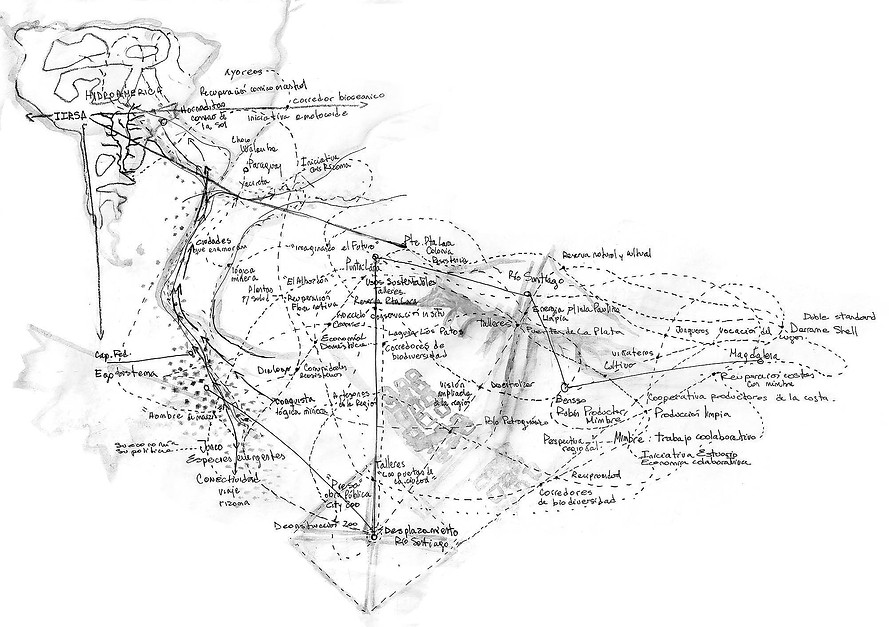
source: Ala Plástica website gallery
INTRODUCTION
Collaborative art and the benefits of a transcultural perspective
This visual essay aims to explore Ala Plástica’s use of collaborative practice as a potential model for other artist-environmentalist movements in the Global South. To do so, a critical theory of socially engaged art should be considered, specifically in a global and transcultural context. Grant Kester (professor of Art History at the University of California, San Diego and founding editor of critical journal FIELD) and Monica Juneja (art historian and professor of Global Art History at the University of Heidelberg, Germany) have provided some key points regarding collaborative art practice as a site for experimentation in a social setting and how transcultural aspects can help bear insights to specific socio-political circumstances in certain areas (i.e. colonial continuities and issues of decolonisation) and how that, in turn, influences art production and collaboration/participation.
Here is a summary of Kester’s main arguments from his book “The One and the Many: Contemporary Collaborative Art in a Global Context” (Duke University Press, 2011):
- collaborative art is a mode of ethico-representational engagement
- works like Park Fiction and the AA Project (by Ala Plástica) exhibit the desire to work through experiences in an experimental manner
- the definition of art is in constant flux and must therefore depend on the social conditions of local history
Kester reviews the fluctuations of what can be defined as art by looking at how it has evolved throughout time. He notes that contemporary art for example, its attempt at a destabilisation of power exhibits a paradigm shift, writing:
“Art is trapped within the oscillation between challenging the institutional power and being institutionalised.”
Juneja further writes in her article “A very civil idea…Art History, Transculturation, and World Making – With and Beyond the Nation” (Zeitschrift für Kunstgeschichte, 2018) that an ever-evolving art history must:
- examine the specific dynamic between distance and proximity, and pay greater attention to multiple relationalities that unfold beyond the coloniser-colonised divide
- according to Partha Mitter, direct attention to how actors on these sites (referring to territories) (…) sought to make its civilisational aspect serve as a critique of colonialism
In correspondence to Kester’s idea that collaborative art is a mode of ethico-representational engagement, Juneja makes it a point to say the following about transculturation:
“The idea of world-making needs to be anchored as a perspective with which to shape [art history] where the relationship between ‘archive and vision’ is itself an ethical responsibility.“
Democratic “critical zones”: environmental activism and its colonial continuities
In order to look at Ala Plástica’s artistic approach to collaboration, it would be imperative to branch out beyond the scope of art history and cross into broader disciplines. For this investigatory purpose, we should consider Mihir Sharma’s thoughts on colonial continuities in environmental activism in the Global North as well as Bruno Latour’s philosophies on humans and their relation to the environment to recognise the principal contexts in which Ala Plástica works.
Mihir Sharma is a writer and academic who offers lectures on climate activism in the Global North and explores this phenomenon as a method of decolonisation that, paradoxically, has difficulty fully addressing its euro-centrism. However, he notes that key elements remain the same for climate movements in both the Global North and the Global South: where (a) climate change and justice is a social issue and that (b) environmental movements must be based on community involvement in addition to individual motivation. To support this, I have compiled a summary of Sharma’s positions on the decolonisation of climate activism in the Global North in a list of bullet points:
- What is meant by environmental activism as a method of decolonisation -> aspiration toward programme of reparations, oriented toward present-future politics using past actions (including effects of colonialism and its continuities) as reason, involvement of international relations in solving a global problem
- There is an attempt at the development of anti-colonial thinking in Western environmental movements through collaborative projects and collective reflection
- Activism is a movement generated for the community, rather than the individual
- The idea of “climate justice” is brought forth by a culmination of dialectics where it is posed as a social issue, where the fight against capitalism, racism, etc. is imperative to achieving climate goals
When it comes to Ala Plástica, an artist-environmentalist group based in Argentina, their approach to “anti-colonial thinking” encourages a holistic transcultural world-view in climate discussions by offering collective reflection. Ala Plástica achieves their approach through collaborative artistic intervention. However, with collaboration and inter-human relations comes a question of democracy and how that connects to our perception of a physical earth/environment. Latour, for example, talks about the Anthropocene in terms of human engagement with nature and explores its democratic character, thereby implicating non-human entities as being influenced by inter-human politics (another topic heavily discussed in socially engaged art theory). His arguments are summarised in the following bullet points:
- There has been a “breech” between politics on globalisation (of nature): the essential link between conservative revolution and its denial of the new climate regime leads to disorientation and issues of identification, in which territories affect democracy and vice versa.
- The “Terrestrial” serves as a visualisation of terrain where politics is being exerted and can be defined as a democratic critical zone.
- Art exists as an exploration of connections and relations between humans and non-humans. A historical example of art being used as a medium of exploration of human control over non-human entities is Leviathan by Thomas Hobbes.

source: Wikimedia Commons
Issues of control, as exemplified by Latour, exhibit interesting parallels to the discourse about artist/collaborator/participant control in socially engaged art. How that ties in with democratic aspects that extend beyond the spectrum of human politics is fundamentally explored in Ala Plástica’s “rhizomes” (Fig. 1.) as a visual map of what Latour calls “critical zones”.
ALA PLÁSTICA
Who are they and what do they do?
“Ala Plástica is an art and environmental organization based in Río de la Plata, Argentina that works on the rhizomatic linking of ecological, social, and artistic methodology, combining direct interventions and defined concepts to a parallel universe without giving up the symbolic potential of art.”
Ala Plástica website
This is a quote taken directly from Ala Plastica’s website explaining in the broadest sense what they do and the intentions of their projects. They claim to enact socio-ecologlical change in an artistic and experimental manner. In order to underline their standing in contemporary socially engaged art, I have dissected their artist statement in the form of a diagramme:

I connected their terms with ideas from pioneering texts regarding socially engaged art. In this statement, Ala Plástica describes how they use direct interventions as their art-making method. Their long-term investment in space (specifically the Río de la Plata region in the AA Project) can be classified as “strategic manipulation”, achieved through the participation of Argentine locals. Additionally, Nato Thompson writes in his 2011 book “Living as Form” that the cultural and symbolic manipulation accompanying activism is similar to what can be seen in modern art. Taking in mind defined concepts allows Ala Plástica to adhere to the aesthetic responsibilities and principles of socially engaged art practices. Nicolas Bourriaud opened the discussion about relational aesthetics in 2002 referring to Situationist International as the pioneers of relational art in the 1960s by creating “constructed situations” or “simulated microtopias” that exhibit central themes of togetherness. This can be seen in Ala Plástica’s statement, as they refer to a “parallel universe”, which alludes to a symbolic “togetherness” in order to create a vision for the Argentinian community. The group is experimental, another characteristic of relational art, and their work is in perpetual flux. Their work acts to produce a catalyst of “organic objectivity shifts” with sustained interventions. How exactly this constitutes to aestheticism or how the symbolic potential of art is actually achieved through their work remains unclear with this statement alone, therefore I have diagrammed another statement of Ala Plástica’s concerning their artistic process:
“Utilizing dialogue and communication as a primary means, we have created unconventional artworks (…), and stimulated collective experiences to empower individuals to have a wider field of influence in their own political and biological environment.”
Ala Plástica website
With the aforementioned quote in particular, Ala Plástica zooms in on how they keep the symbolic potential of art (as per the last quote) and their intentions behind their artistic practice. I have dissected this quote in conjunction with their initial statement and established definitions of socially engaged art.
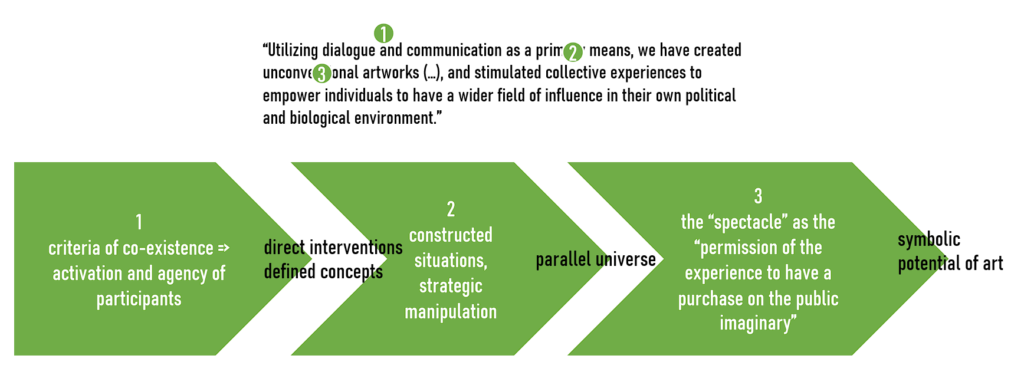
As Ala Plástica establishes dialogue and communication as inherent to the participation process of their projects, they give agency to their participants, ultimately embracing the idea of co-existence as a means to create. In pairing this with direct interventions and defined artistic concepts, they stimulate collective experience in a constructed/simulated situation, which, according to Thompson, is an act of strategic manipulation, and in my interpretation, is what Ala Plástica means by creating a “parallel universe”. Participatory art can — according to Claire Bishop in “Participation and Spectacle — Where are we now?” — communicate on two levels, namely to the participants and to the spectators. However, there must be a mediating third term that allows this very communication to take place — this we call the “spectacle” and define as the “permission of the experience to have a purchase on the public imaginary”. In this sense, we can see how Ala Plástica’s use of spectacle is grounded in the empowerment of their participants, which then clarifies what Ala Plástica views as the symbolic potential of art and how this is a component to their collaborative process.
THE AA PROJECT
The video above accompanied Ala Plastica’s installation in the exhibition GROUNDWORKS in 2005. It was not specifically made for the site-specific AA Project in the Río de la Plata region, but to showcase the project in an institutionalised gallery space as visual evidence of their work in Argentina.
Levels of social engagement
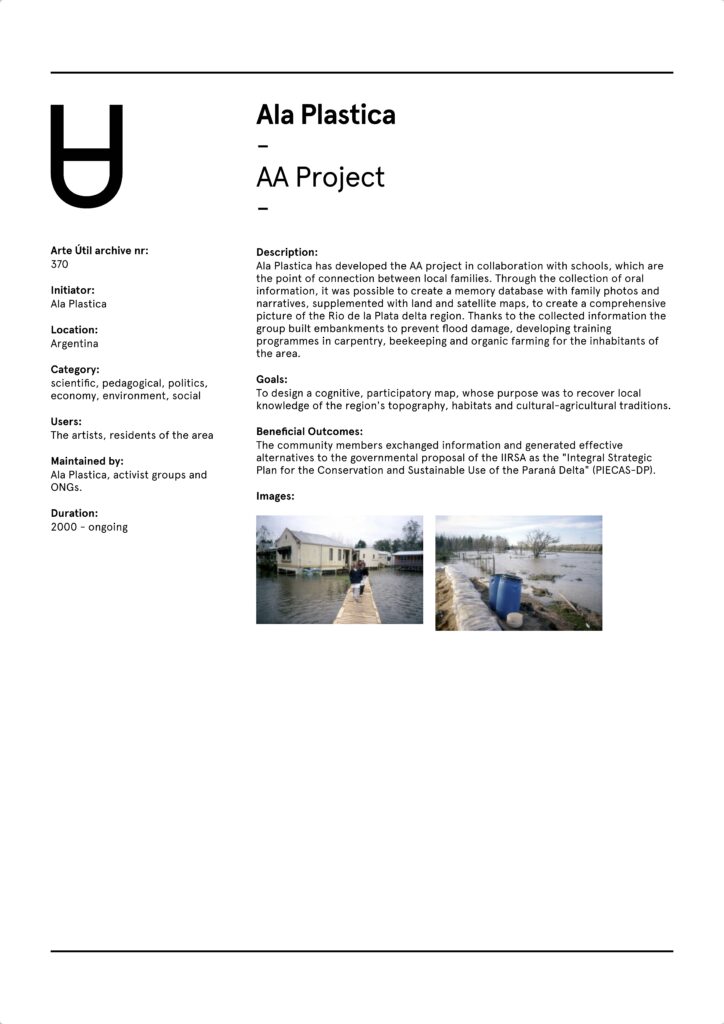
source: https://museumarteutil.net/projects/aa-project/
Above is an archived description of the AA Project by Arte Útil. Here, I investigate the levels of social engagement in the artwork in correlation with Bishop’s arguments on democratic socially engaged art and Latour’s own views on art in the Anthropocene. I want to make a suggestion apropos the archived description — that in support of Latour’s description of critical zones, the models of democracy in society are reflected in art. Bishop previously refuted the idea while looking at Christoph Schlingensief’s Please Love Austria (2000) and the Ladder of Participation, which is a suggested gauge for measuring the efficacy of collaborative artistic practice, wherein forms of citizen involvement and the degree of participation determine the overall value of a collaborative artwork. In Please Love Austria, for example, Bishop criticises this form of criteria by proving the work’s model of “undemocratic” behaviour of its participants corresponds to true democracy in Austria. She further notes it falls short of corresponding to artistic gestures, further stating that “models of democracy in art do not have an intrinsic relationship to models of democracy in society”. However, I noticed, that even though models of democracy in society and in art have their own complexities, it could be fallacious to completely alienate the two. As exhibited in the AA Project, both models of democracy are essential, and citizen control, as per the Ladder of Participation, is seen as the ultimate goal. For example, as written in the archive by Arte Útil, the beneficial outcomes include the generation of effective alternatives to the Argentinian government’s proposal of the The South American Regional Infrastructure Integration Project (IIRSA), giving power to the locals to reclaim control over their territory. Ultimately, Ala Plástica was able to incorporate models of democracy in society into the AA Project and make them parallel to — and not conflicting with — models of democracy in art.
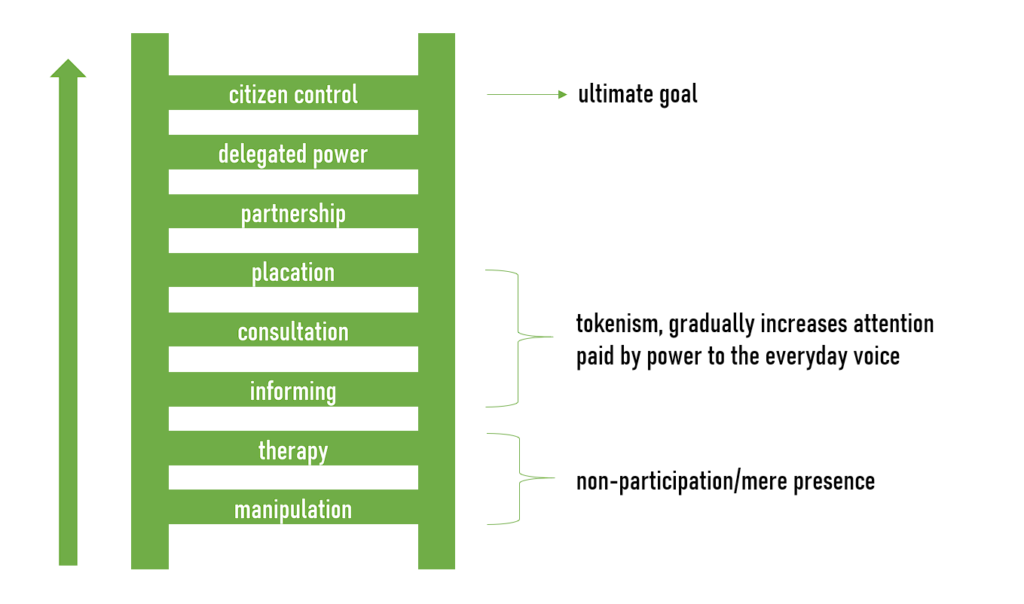
With reference to previous positions on collaborative art provided the introduction, Kester reflects on levels of engagement while Juneja’s arguments have a direct correlation to Ala Plástica’s AA Project if we decide to apply her statements in that context. Recording “art history” in terms of “archive and vision” is somewhat analogous to the AA Project’s mapping procedure in the sense that data collection from locals was able to create a holistic visualisation of the Río de la Plata region, which can translate to Juneja’s arguments about how art history can also benefit from a more holistic (global) approach.
Collaborative art practice as a site for environmental activism
source: Arte Ùtil archives
” [The AA Project] mobilised new modes of collective action and creativity in order to challenge the political and economic interests behind large-scale development of the region.”
Grant H. Kester, The One and The Many: Contemporary Collaborative Art In A Global Context
Kester uses the AA Project in his 2011 book as a case study and writes about their project as an act of resistance against the Zarate-Brazo Largo rail complex, which was considered a threat to fishing and tourist economies, social services, and local employment. However, after researching more about the project itself, the AA Project is just one of many by Ala Plástica to counteract the proposed IIRSA, its roots tracing back to Spanish and Portuguese colonisation and the denomination of South American territories as a “global factory”. So, while in essence the AA Project had been established to specifically advocate against the rail complex, the entire body of work of Ala Plástica tackles the grander scheme of the IIRSA. Alejandro Meitin, one of the founders of Ala Plástica, wrote an essay for the Hemispheric Institute entitled “Urbanismo crítico, intervención bioregional y especies emergentes” that, according to the abstract,
“explores transdisciplinary strategies of critical urbanism that integrate artistic modes of thought and action to create contexts of resistance and transform reality.”
In the essay, Meitin explains their motives for their projects, writing that:
“In reality IIRSA is an accumulation and coordination of a great diversity of projects that already existed and now they are given a framework of regional vision that subordinates their social objectives to the logic of competitiveness. It is particularly surprising that most of the initiatives proposed by the new governments are the same, especially in Brazil and Argentina, as those that the neoliberal governments of the last decade of the 20th century attempted to implement and that their peoples in one way or another managed to stop or hinder through a broad debate generated and built from the communities and regions with strong activism from many civil society organizations in our regions.
translated from the original
According to Guy Debord (as mentioned by Bishop), a spectacle is “participation [rehumanising] a society rendered numb and fragmented by the repressive instrumentality of capitalist production.” We can relate Debord’s statement to the efforts of Ala Plástica by looking at the AA Project as symptomatic of a resistance against colonialist expansion and degradation of territory. However, is the acknowledgement of the project’s aesthetic value detrimental to its activist character? For that, we need to look at a few comparisons and the issue of institutionalisation of such artist/activist projects, which we will do so in the next chapters.
COMPARISONS
Levels of social engagement and activism can very well depend on local socio-political climates. For example, there is a disparity between regions in the Global South and the Global North, which results in differing methods of interventions and collaborative practices. This is one of the multiple reasons I hope to explore Ala Plástica’s use of collaborative practice as a potential model for other artist-environmentalist movements in the Global South, as established regimes and their relationship to such practices differ between the two hemispheres. Therefore, I would like to compare the execution of the AA Project to projects in the Global North and South, for which I have chosen to look at Park Fiction (Germany) and Moving Rainbow (China, Tibet) respectively.
Park Fiction
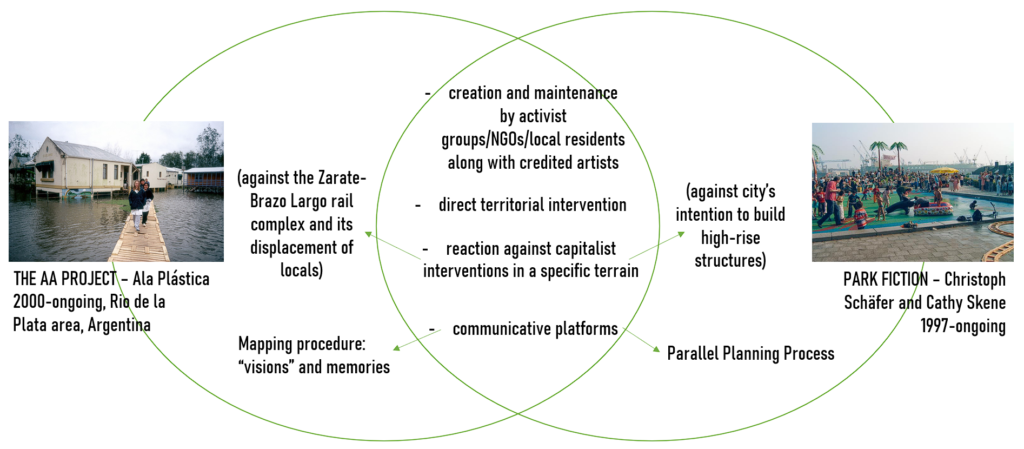
At first glance, the AA Project (Global South) and Park Fiction (Global North) seem to have executed their respective projects in a similar fashion — the main difference lies in the importance of “terrain” in the AA Project and its role in local infrastructure. The methods of production, I could claim for example, are essentially identical, however the contexts in which these projects were conceived possess ever-so-slightly distinct concerns. Let me elaborate: both projects rely on the creation and maintenance by activist groups/NGOs/local residents along with credited artists, which is very self-explanatory for collaborative work. In both projects, there is direct territorial intervention as a reaction against capitalist/neo-liberal interventions in their respective localities. Ala Plástica affiliates their interventions with theories of territory and large-scale capitalist expansion (i.e. the Zarate-Brazo Largo rail complex and the IIRSA), while Park Fiction works against urban planning processes implemented locally (i.e. the city’s intention to build high-rise structures on the lot). Both projects use communicative platforms to achieve their artistic goals, and rely on participants to contribute to the infrastructural outcomes of their projects. Ala Plástica used mapping procedures to archive visions and memories of the locals as well as record traditions of cultural significance to incorporate into their programmes. Park Fiction had what they called a “Parallel Planning Process” in the form of a board game to attract residents of the area to engage in creating a blueprint for what is now known as the Gezi Park in Hamburg.
Moving Rainbow
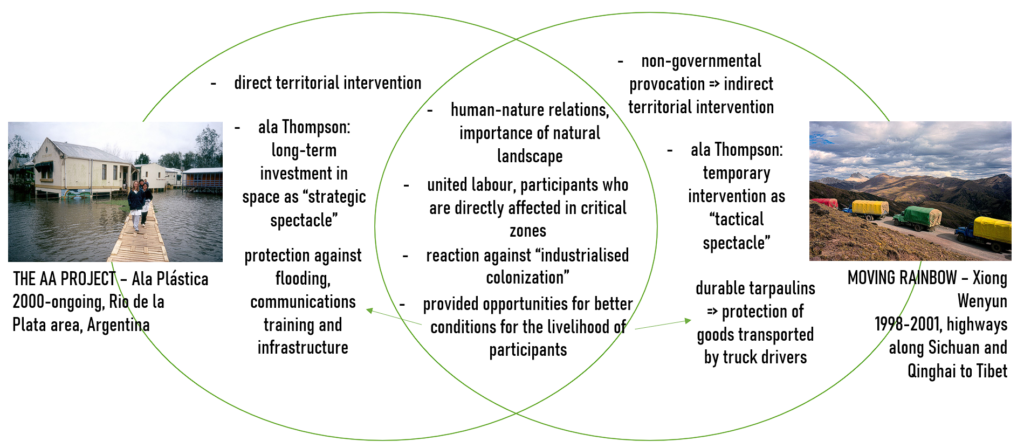
In Fig. 14, for example, the contexts of AA Project and Moving Rainbow are seen as virtually the same. Both projects from the Global South emphasise human-nature relations and the importance of natural landscape, yet the execution of the following projects are different. An important aspect of both projects is the incorporation of local cultural tradition: AA Project and willow cultivation, Moving Rainbow and the colours of Tibet — this enhances the importance of participation and gives the locals a valuable role in contributing to the intervention. This approach is more personal compared to Park Fiction and embraces specific unifying aspects of their respective communities. Here, the participants directly affected in these critical zones engage in united labour as a reaction against “industrial colonisation”, and are provided opportunities for better livelihood conditions (i.e. better infrastructures in the Río de la Plata region, and more durable work equipment for truck drivers) as a result. Their forms of united labour, however, differ in terms of the timeframes of intervention. Xiong Wenyun’s intervention was temporary, and was only achieved while the trucks drove through mountainous highways, exhibiting, how Thompson calls it, a “tactical spectacle” that does not directly provoke the government. In other words, Xiong Wenyun might have found a loophole in releasing a statement against China’s trade dominance and environmental exploitation.
source: Three Shadows Photography Art Centre
INSTITUTIONALISATION
Groundworks
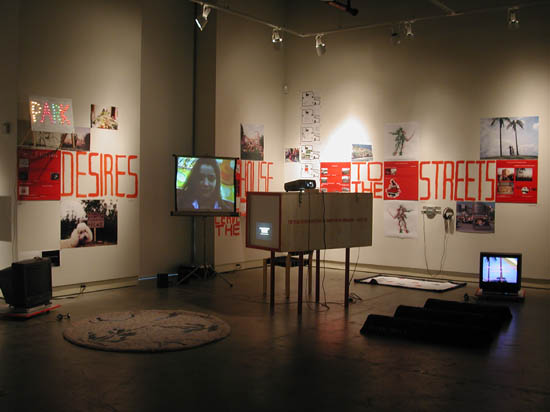
Fig. 17. Park Fiction at the Groundworks exhibition, 2005 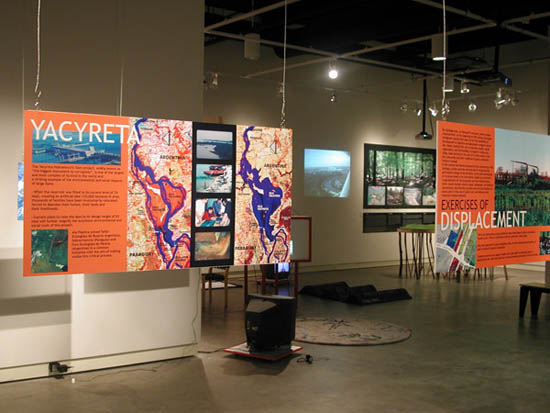
Fig. 18. Ala Plástica at the Groundworks exhibition, 2005
source: Groundworks website gallery
I chose to explore the 2005 GROUNDWORKS exhibition organised by Grant H. Kester because I want to look at Ala Plástica’s scale of activism in artmaking by investigating its institutionalisation. As mentioned by Kester in the introduction to my essay, “art is trapped in the oscillation between challenging the institutional power and being institutionalised” while arguing the destabisilation of power as a paradigm shift in contemporary art. Both the AA Project and Park Fiction were featured in the GROUNDWORKS exhibition of 2005. To do that, they transformed their site-specific projects into installations. The works, as evidenced in the pictures above, had been curated to be situated next to each other in the exhibition, further hinting at their similarities. Interestingly, Bishop writes that “activist art sacrifices its aesthetic credibility on the ‘altar of social change’”. However, Jacques Rancière, as quoted by Bishop, states that shock and disruption are necessary prerequisites for authentic art, and that participation has potential for these types of conflict. Kester also writes that:
“(…) it is the procedure of distanciation and critique that constitutes the essential content of the contemporary aesthetic.”
Kester implies that contemporary art, in essence, has less to do with stylistics and more to do with identification and conflict of power. Before being placed in a gallery, the AA Project and Park Fiction were projects directly involved with social change, as well as having aesthetic credibility (we can argue this through the ideas of Rancière and Kester). Once something like the AA Project or Park Fiction or Moving Rainbow (for context: it became a series of photographs exhibited numerous times) becomes intsitutionalised and placed in a gallery/exhibition, does that eliminate its activist character?
One last comparison: Equation of State
Equation of State by Martha Atienza is an example of a circumstance where institutionalisation is not a risk, but inherent to collaborative art practice. Like Ala Plástica, Martha Atienza of the Philippines filmed and turned her collaborative practice into an installation she presented for the 2019 exhibition Equation of State in Silverlens Galleries, Makati, Philippines. While her work serves as a reaction to the removal of Bantayan Island’s Wilderness status (on top of its struggle over land-use and ownership), Atienza does not create a direct response nor enact direct social change. The intention of the work, like Rancière puts it, is to shock and disrupt. She additionally placed a robotic mangrove installation (as seen in the video above) to call out the mismanagement (by the government) of the mangrove forests that protect Bantayan Island and its residents from natural disasters. The collaboration is not meant to sustain its participants but to relocate and relay regional struggle to the centralised government municipality of Metro Manila. She stages the intervention in the confined white walls of a gallery space in an attempt to protect her work, but also to indirectly challenge environmental politics. Her work interestingly adheres to Bourriaud’s concept of “togetherness” by working with residents of Bantayan, chews it, swallows it, and regurgitates it as an outcry to the Philippine government’s handling of environmental issues, adhering to Bishop’s counter-concept of “antagonism”. The main difference between the “institutionalisation” of the AA Project and of Equation of State, is that on the one hand, the AA Project is set up in GROUNDWORKS as a three-dimensional progress report and aims to explain and present their motivations, methodology/process, and results. Equation of State, on the other hand, is both a report of the happenings in Bantayan Island, and a request for the viewer “to question environmental management and the almost invisible hand of legislation that governs territorial land and waters.” (Jake Atienza, Equation of State catalogue) The AA Project is thus a showcase of democracy, while Equation of State is a call to it.
CONCLUSION
Can collaborative art groups like Ala Plástica serve as a model for other artist-environmentalist movements in the Global South?
To answer the question I had posed in my introduction, I would like to reflect on Juneja’s past arguments for using a transcultural perspective, specifically the following:
- There is an urgency for art that can function as a domain of symbolic actin, as an area of political and creative practices, of affirmative, performative citizenship rather than simply a reactive aesthetic
- [Transculturation] seeks to avoid an overemphasis on polarities and oppositional structures by paying greater attention to multiple relationalities that unfold beyond the coloniser-colonised divide,
- HOWEVER: There must be an examination of the specific dynamics between distance and proximity; to then unravel specific issues and conditions of the particular locality, where modernist ideas became a productive site of confrontation and negotiation
In summary, Juneja writes:
“A transcultural perspective therefore means that we study a combination of comparison and entanglement. It also means negotiating scales beyond the local and the global to navigate multiple scales, indeed to grapple with scale from the perspective of actors for whom it becomes a mode of self-positioning.”
This provides reason to determine that whether collaborative groups like Ala Plástica can serve as a model for other artist-environmentalist movements in the Global South may still be heavily debated.
Issues to consider
As we have noticed in our comparisons, there is a difference in treatment of socially engaged (environmental) art discussions in the Global South (for example vs. the Global North), regarding the following issues:
- Colonial continuities within questions of environment, territory, and the Anthropocene
- Political limitations; potential effects of the local socio-political climate and its acceptance of public (artistic) confrontation; non-governmental provocation vs. governmental provocation
- Antagonism and aesthetic autonomy: is the attempt to separate aesthetics a privileged domain of critique?
With these issues in mind, we can conclude that the answer requires a multi-faceted and interdisciplinary approach. The importance of looking at this with respect to the Global North-South divide lies not only within their differing treatments of climate activism to address colonial continuities, but also within the use of environmentalist action as reparation in the Global North (cf. Sharma) versus restoration and reclamation in the Global South. What seems prevalent in the Global South, for example, is the provision of infrastructure and/or help to the participants. The main difference between participatory works in the Global South and the Global North is the creation of opportunities for their participants with long-term benefits, as well as incorporating elements of culture and tradition. In the Global South, the idea is not to transform but to improve, and Ala Plástica does so and claims to do so in an experimental manner. Nonetheless, their methods might not be as accessible to other groups. In China and the Philippines for example, interventionist methods, whether artistic or not, can be sensitive to the political climate. The current situation in the Philippines for example (to place this argument in a more relevant scope), suggests that interventionist artistic practice can be punishable by law (cf. 2020 Anti-Terror Law). This would, of course, highlight the “activist” nature for certain viewers and spectators, however, issues of reception can, as Bishop argues, threaten its aesthetic credibility. Again the “model” issue is brought to the fore, as in some areas Ala Plástica would be difficult to emulate. This is where the “institutionalisation” of environmentalist actions can act as a protector of concepts where a long-term investment in space is unattainable.
It is thus my belief, that the characteristics of a true ideal collaborative artistic and environmentalist practice in the Global South would incorporate Ala Plástica’s regenerative procedures and respect for local tradition to create better livelihoods for their participants, but also Xiong Wenyun’s and Martha Atienza’s tributary approach to artistic institutions as a means of emphasising the aesthetic value of their interventions and thus use a gallery’s walls as “protection” from authoritarian vindication.
However, as Jason Miller argues in his article “Activism vs Antagonism: Socially engaged art from Bourriaud to Bishop and beyond”:
“(…) aesthetic antagonism is the problematic assumption that conscience-raising has not only inherent ethical value, but also an ethical priority that shields the artist from any other form of ethical critique.”
When considering Miller’s arguments about aesthetic antagonism, it is incredibly important to note that the institutionalisation of interventionist work must not and should not excuse any artist or artist group from violating ethical values and principles. Artistic provocation, will, and always will, have its moral influences on its spectators. In whatever way the artist chooses to use the privileges of institutionalisation to “protect” their work will remain their decision and become, all the same, subject to scrutiny.
BIBLIOGRAPHY
- Ala Plástica. ‘Ala Plástica’, 2016. alaplastica.wixsite.com/alaplastica/about.
- Atienza, Jake. Martha Atienza: Equation of State. Makati City: Silverlens, 2020.
- Bourriaud, Nicolas. 2002. “Introduction.” In Relational Aesthetic, 11-24. Dijon-Quetigny: Les Presses du Réel: 2002.
- Bishop, Claire. 2004. “Antagonism and Relational Aesthetics.” October 110: 51-79.
- ———. 2012. “Participation and Spectacle: Where are we now.” In Living as Form: Socially Engaged Art from 1991-2011, edited by Nato Thomson, 34-45. New York: The MIT Press.
- Coleman, Vera. ‘Emergent Rhizomes: Posthumanist Environmental Ethics in the Participatory Art of Ala Plástica’. Confluencia 31, no. 2 (Spring 2016): 85–98.
- Future Learn. ‘Case Study: Moving Rainbow’. Online Course, n.d. futurelearn.com/courses/socially-engaged-art/0/steps/23853.
- Gezi Park Fiction St. Pauli. ‘Park Fiction – Introduction in English’, 10 December 2012. park-fiction.net/park-fiction-introduction-in-english/.
- Goodman, Jonathan. ‘Xiong Wenyu: Ten Years of Moving Rainbow’, 31 July 2008. artcitical.com/2008/07/31/xion-wenyu-ten-years-of-moving-rainbow/.
- Juneja, Monica. 2018. “‘A very civil idea…’: Art History, Transculturation, and World Making – With and beyond the Nation.” Zeitschrift für Kunstgeschichte 81: 461–85.
- ———. 2020. “Mikrogeschichten: Die Routen des Transkulturellen Modernismus – Microhistories: The Routes of Transcultural Modernism.” In Museum Global: Mikrogeschichten einer ex-zentrischen Moderne – Mircohistories of an Ex-centric Modernism, ed. by Susanne Gaensheimer et al., 37–46.
- Kester, Grant H. ‘Collaboration, Art, and Subcultures’. Caderno SESC_Videobrasil 2 (2006): 10–34.
- ———. The One and The Many: Contemporary Collaborative Art In A Global Context. Duke University Press, 2011.
- Latour, Bruno. ‘Anthropocene Lecture: Bruno Latour’. Lecture presented at the Anthropocene Lectures, Haus der Kulturen der Welt, 4 May 2018. https://www.hkw.de/en/app/mediathek/video/63344.
- Meitin, Alejandro. ‘Urbanismo Crítico, Intervención Bioregional y Especies Emergentes’. Emisférica 6, no. 2 (n.d.). https://hemisphericinstitute.org/en/emisferica-62/6-2-essays/urbanismo-critico-intervencion-bioregional-y-especies-emergentes.html.
- Miller, Jason. 2016. “Activism vs. Antagonism: Socially Engaged Art from Bourriaud to Bishop and Beyond.” FIELD: A Journal of Socially Engaged Art Criticism 3 (Winter): 165-183.
- Sharma, Mihir. ‘An Open Letter on the Unthought Contradictions of Doing Climate Activism’. Stillpoint Magazine, 22 May 2020.
- ———. ‘Decolonizing Climate Activism in the Global North: Whose Crisis?’ Zoom Lecture presented during the lecture series Colonial Continuities: Spotlight On…, 28 April 2020.
- Thompson, Nato. 2012. “Living as Form.” In Living as Form: Socially Engaged Art from 1991-2011, edited by Nato Thompson, 16-33. New York: The MIT Press.
Welcome to Transcultural Reflections
Wednesday, July 22nd, 2020 | Allgemein | No Comments
This blog features selected (visual) essays by students of Heidelberg University’s MA-Programm “Transcultural Studies” that are developed as part of my art historical seminars with a focus on visual and material culture spanning Asia, Europe and many other parts of the world.
The blog encourages students to present their intellectually engaging and research based academic reflections in a public format. It aims at introducing our insights on how objects, agents, concepts and institutions are culturally conditioned, how they circulate, and how they trigger particular practices and discourses in the fields of art and visual culture.
While responding to a specific seminar’s topic such as “socially engaged art”, the presented case studies serve to highlight how cultural difference is constituted as well as contested in processes marked by transculturality. It follows an “understanding [of] cultural difference, not as an arbitrary irrelevance that detracts from the ‘essence’ of art, nor as a social problem to be managed by compensatory policies, but as a distinctive feature of modern art and modernity that was always there and which is not going to go away”[1].
[1] Kobena Mercer, “Introduction”, in: Cosmopolitan Modernisms, Cambridge, MA: MIT Press, 2005, p. 9.
